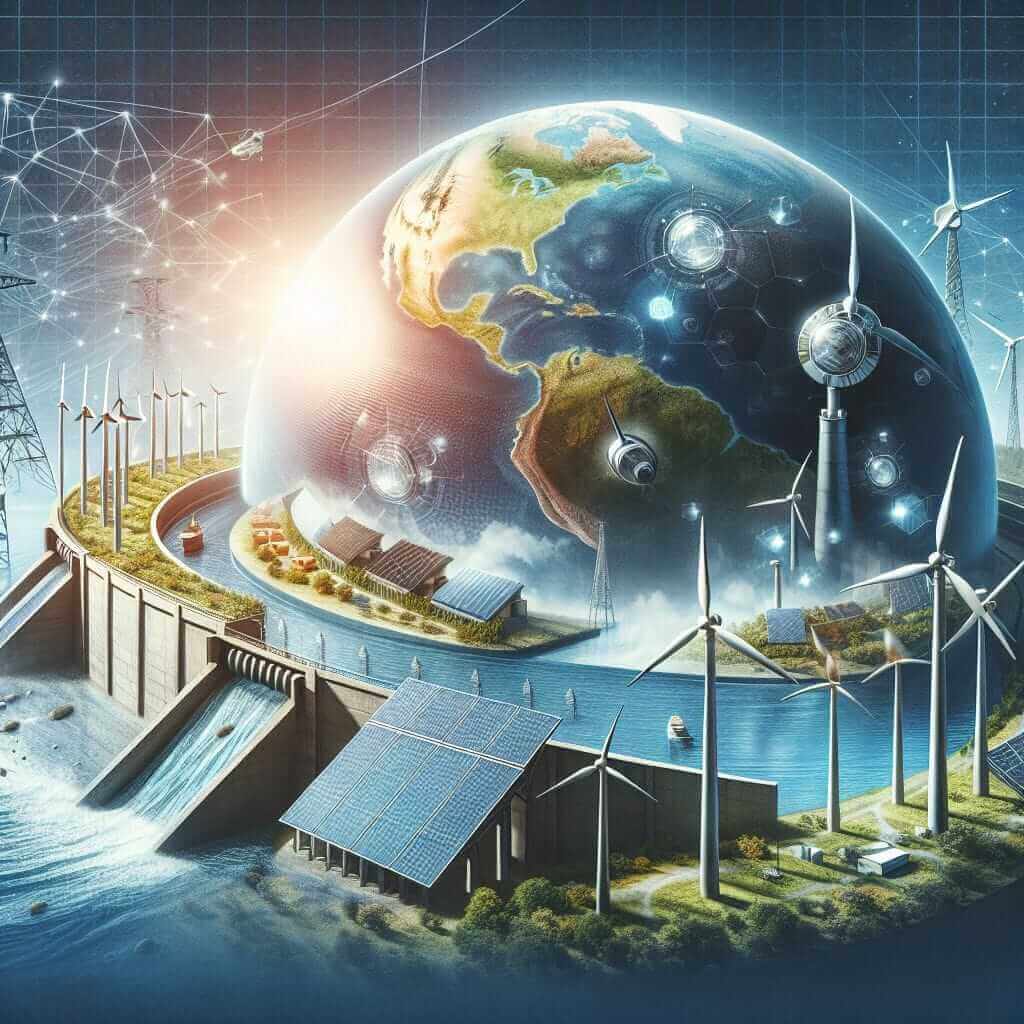The IELTS Reading section is a formidable challenge for many candidates aiming to secure a high score in their IELTS examination. Among the various topics, “What are the challenges of achieving global energy sustainability?” is a topic that has appeared in multiple reading tests over the years due to its relevance and complexity. By understanding the structure of such topics and practicing with realistic passages, you can improve your reading skills and increase your chances of success.
In this article, we’ll explore a comprehensive reading passage tailored to this topic along with questions and answers to help you practice effectively. Additionally, we’ll delve into advanced vocabulary and grammatical structures to bolster your preparation. Let’s now examine the text and accompanying questions to get you started.
Main Content
Reading Passage: Challenges in Achieving Global Energy Sustainability
The quest for global energy sustainability is fraught with myriad challenges, encompassing economic, environmental, and social dimensions. As the world continues to grapple with climate change, the urgency to establish sustainable energy frameworks has never been more pronounced. This reading passage will explore the key hurdles faced on the path to achieving these goals.
Energy Infrastructure and Technological Challenges
A significant obstacle in realizing global energy sustainability lies in the existing energy infrastructure. Predominantly reliant on fossil fuels, this infrastructure is deeply entrenched and difficult to overhaul. Transitioning to renewable energy sources like solar, wind, and hydroelectric power requires substantial investment in new technologies and modifications to current energy grids.
Furthermore, the intermittency and storage issues associated with renewable energy present additional technological challenges. Unlike fossil fuels, which provide a constant supply of energy, renewable sources are dependent on environmental conditions. Thus, advancements in energy storage technologies, such as batteries and supercapacitors, are crucial to ensure a reliable and continuous energy supply.
Economic and Policy Barriers
The economic cost of shifting to sustainable energy systems is a considerable deterrent for many countries, especially developing nations. The upfront investment for setting up renewable energy facilities is high, and financial models to support such investments are often lacking. This is compounded by the lack of coherent policy frameworks that incentivize renewable energy adoption.
Governments play a pivotal role in establishing regulatory policies and providing subsidies or tax incentives to encourage investment in sustainable energy. However, in many regions, the absence of such supportive policies hampers progress, stymying efforts to transition away from fossil fuels.
Social and Cultural Factors
On the social front, there is often resistance to change, primarily driven by a lack of awareness and understanding of the benefits of sustainable energy. Educational campaigns and public awareness programs are indispensable in promoting the importance of energy conservation and the advantages of renewable energy sources.
Cultural factors also play a role, where traditional practices and reliance on conventional energy sources are deeply embedded in certain communities. Overcoming these social barriers requires concerted efforts in community engagement and education.
Environmental Impacts and Resource Availability
Ironically, the quest for sustainable energy can also pose environmental challenges. For instance, large-scale solar farms and wind turbines require significant land areas, which can disrupt local ecosystems. Additionally, the manufacturing processes for renewable energy technologies can be resource-intensive, leading to the depletion of materials like lithium and rare earth metals.
Balancing the need for sustainable energy with environmental conservation is an ongoing challenge that necessitates innovative and sustainable approaches to resource extraction and technology production.
Questions
1. Multiple Choice
-
Which of the following presents a technological challenge for renewable energy?
- A. High initial investment costs
- B. Intermittency and storage issues
- C. Public resistance
- D. Government policies
-
The primary economic barrier to achieving energy sustainability is:
- A. Lack of resources
- B. Insufficient land availability
- C. High setup costs
- D. Technological reliability
2. True/False/Not Given
- Transitioning to renewable energy requires modifications to existing energy grids.
- Renewable energy sources provide a constant supply of energy.
- All countries have established policies to incentivize renewable energy investment.
3. Matching Information
Match the challenges with the respective categories:
- i. Social and cultural factors
- ii. Environmental impacts
- iii. Economic and policy barriers
A. Resource availability
B. Public awareness campaigns
C. High initial investment
Answers
Multiple Choice
- B. Intermittency and storage issues
- C. High setup costs
True/False/Not Given
- True
- False
- Not Given
Matching Information
- i. B. Public awareness campaigns
- ii. A. Resource availability
- iii. C. High initial investment
Common Errors and Tips
When tackling reading passages, many candidates struggle with time management and the ability to identify key information quickly. It is crucial to practice skimming and scanning techniques in order to efficiently locate answers in the text.
Vocabulary
- Fraught (adj.) /frɔːt/: filled with something undesirable.
- Intermittency (n.) /ˌɪntəˈmɪtəntsi/: the quality of occurring at irregular intervals.
- Supercapacitors (n.) /ˌsuːpərˈkæpəsɪtər/: devices for storing electrical energy.
Grammar Focus
- Relative Clauses: These add extra information about a noun. Example: “The energy infrastructure, which is predominantly reliant on fossil fuels, is difficult to overhaul.”
- Passive Voice: Often used in formal writing. Example: “The intermittency and storage issues associated with renewable energy are addressed by advancements in energy storage technologies.”
Conclusion
In preparing for the IELTS Reading section, familiarizing yourself with common topics and practicing with realistic passages is key. We have explored the challenges of achieving global energy sustainability, a topic that encompasses various dimensions and is relevant for many IELTS reading passages. Keep practicing, focus on understanding the nuances of the text, and remember to manage your time effectively during the exam.
For further reading on related topics, check out our articles Renewable Energy and Carbon Emissions and The Impact of Renewable Energy on Environmental Sustainability.

By continuously engaging with such texts and questions, you can significantly enhance your reading skills and approach your IELTS exam with confidence. Happy studying!